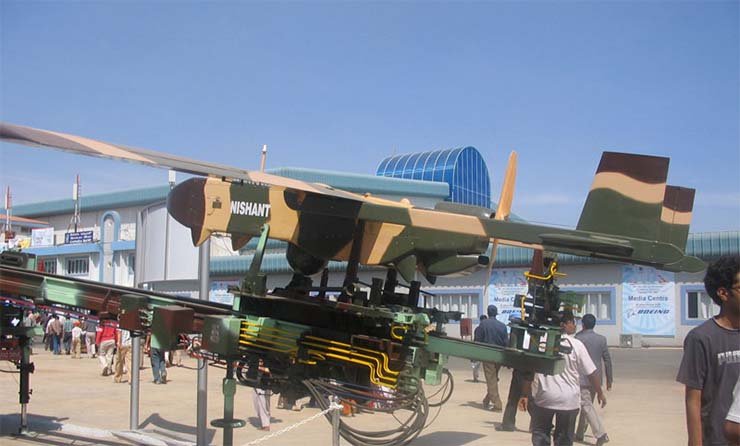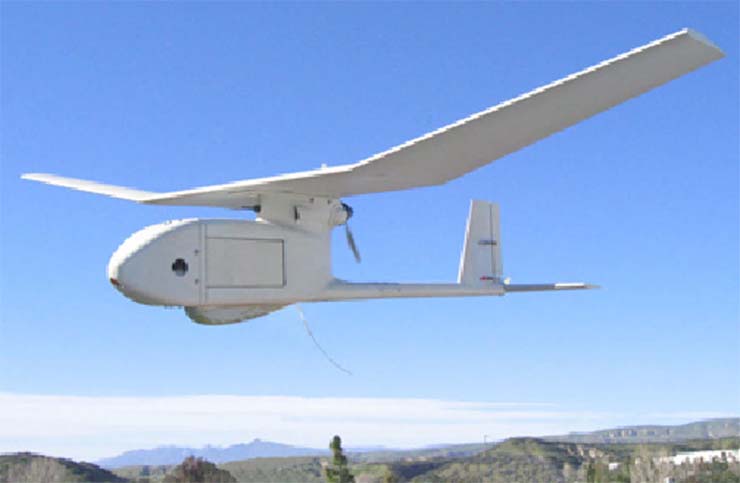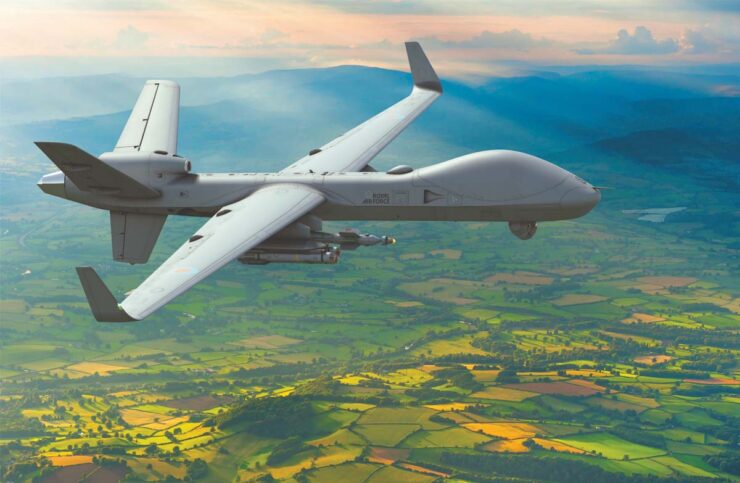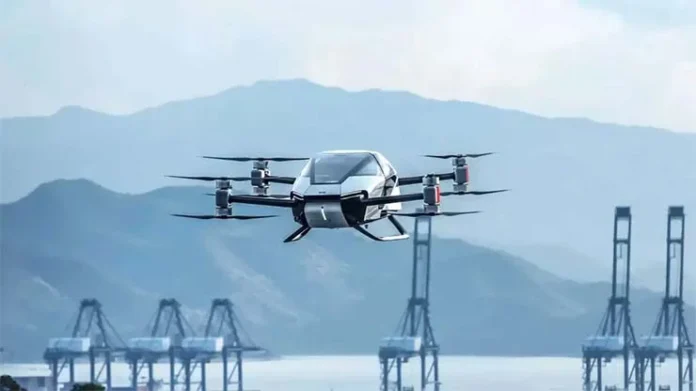DRONES AND INDIA – AN ANALYSIS
Drones are advanced, automated, unmanned, and remotely-piloted technological assets employed for various commercial and military reasons. Drones are officially named Unmanned Aerial Vehicles or UAVs. Those used for combat purposes are called Unmanned Combat Aerial Vehicles or UCAVs. They are crewless and operated remotely from a control station. Drones are utilized for a variety of reasons: surveillance, crop protection, construction project surveying, filmmaking, healthcare, e-commerce delivery, and more such areas. Drones are also used for monitoring climate change and carrying out post-disaster operations. They are also used for agricultural surveys and infrastructure monitoring. The Government of India’s Drone Shakti programme is intended to ensure that the Indian drone industry doesn’t suffer from fragmentation. The aim is to “unify the efforts of the drone ecosystem”. It can be seen that drones cater to a variety of purposes and this article will consider their adoption and relevance in the military domain of India.
Military or combat drones carry larger payloads and are bigger in size and structure. They are meant to participate in wars and other such circumstances. Military drones are used for combat purposes that involve the targeting of humans or enemy assets, for anti-air operations and for intelligence, surveillance, and reconnaissance (ISR) missions. Drones are extensively utilised by armed forces for the above purposes and are maintained for the same reasons. They can also be used in times of war. The United States of America (USA) has consistently conducted drone missions to knock out terrorists and salvage the human capacities of its armed forces. This has helped reduce battlefield casualties and has also resulted in the elimination of high-profile terrorist targets.

THE ADOPTION OF DRONES FOR MILITARY PURPOSES
The first drone that was designed in India was the Nishant. This drone was developed by India’s Defence Research and Development Organisation (DRDO). The Nishant drone made its first flight in 1995. The programme came to an end in 2018 with the Army cancelling further orders. As per unconfirmed data, the Indian Army has four numbers of the Nishant drone in its inventory. The first drone was designed specifically for the Indian Army, whereas the Air Force and the Navy were only to figure in much later. This is the ‘tradition’ as far as the defence of the country is concerned and is likely to hold out for much longer. The DRDO is building Medium-Altitude Long-Endurance UAVs, or MALE UAVs.
These are standard drones being researched and developed and are also in service. The Indian Army currently has drones for operations such as surveillance and logistics support. The Indian Air Force employs drones for covert combat missions while the Navy uses drones for a number of purposes such as maritime domain awareness and naval missions.
Israel provides the greatest number of foreign-sourced drones in the Indian inventory alongside the United States. Jerusalem is a strategic defence partner of India and is involved in high-profile arms deals with New Delhi. By 2025, the global drone market is envisaged to reach $30 billion. During the novel Coronavirus period, India bought Israel’s advanced Heron drones following the fallout with China in Ladakh.
They were deployed for surveillance purposes in the eastern Ladakh sector in India’s north. The new Herons are deemed as far more advanced than the earlier Israeli-made Herons that India already has in its drone inventory. If India succeeds in the integration of military drones in its arsenal, it is not too hard to imagine the Indian armed forces undertaking specific missions to deal with terrorist issues and eliminate high-value targets in the process. This will hugely boost the country’s affront against terrorism of all kinds, especially cross-border and transnational terror.
In 2020, India decided to procure the Raven UAVs from the United States. This was following the protracted conflict in Galwan Valley in Ladakh with China. The Indian Army had decided to procure the RQ-11 Ravens for reconnaissance missions. As is evident from this development, the Indian armed forces still procure high-end, readymade equipment such as advanced combat drones from partner countries. This is an issue that is in need of a fix and the aatmanirbharta programme is poised to provide the foundation of support for this endeavour. It will take time, of course, as all strategies and plans do. As of November 2022, the Indian Army has been seeking a large number (2,200) of drones for a variety of combat-related purposes.
These drones will likely be obtained and integrated from indigenous sources. Several state-owned and private companies are set to battle it out for this drone tender. One of India’s most ambitious drone plans is the Ghatak UCAV. The Ghatak drone is in development and is designed to be a stealth UCAV that can operate on its own. It will be armed with missiles and precision-guided munitions. The prototype of this drone will be made available in 2024-25.

The Tactical Airborne Platform for Aerial Surveillance-Beyond Horizon-201 (TAPAS-BH-201) is an advanced UAV that has been unveiled at the Aero India 2023 show in Bengaluru. The TAPAS UAV is known as the Rustom II and has been in development since 2009. The first flight of the TAPAS UAV was in November 2016. The TAPAS UAV captured the Aero India rehearsal from 12,000 feet. India has come a long way from the failed Nishant to the advanced and competent TAPAS-BH-201. The TAPAS is designed in congruence with the MQ-1 Predator drone of the United States. It is only hoped that India’s aatmanirbharta aspirations will lead to greatness in the drone industry.
CONCLUSION – DRONES ARE HERE TO STAY
Despite India not excessively utilising drones for military purposes, drones remain integral to the Indian military. India is just about to conclude a deal for the MQ-9B Reaper drones from the United States for US$ 30 billion. The Make in India programme is increasingly focusing on indigenisation and the aatmanirbharta campaign is poised to envelop drones as an important component of defence improvements and modernisation. In fact, in February 2022, India banned the import of drones except those for defence research and security purposes.
Drones have also been used against India. Terrorists have made the most of this technology and have air-dropped packages such as grenades and other materials for use against India. In a raid in Hyderabad in late 2022, India uncovered that Pakistani drones had been used to air-drop grenades. This was clearly a conspiracy hatched by Pakistan’s nefarious Inter-Services Intelligence (ISI) against India.

Drones will be further integrated into the Indian defence ecosystem through deals such as the one for the MQ-9B. The MQ-9B is needed for current operational requirements, as per Prof. Harsh V. Pant. Vice Admiral Pradeep Chauhan of the National Maritime Foundation describes the MQ-9B as “here and now”. This means that the MQ-9B is a pressing requirement of the Indian military drone system and that the Make in India programme will take some time before its goals can be achieved. This attacking UAV will go on to become a frontline, covert fighter for India and will ease itself into combat missions and allay the possibility of human deaths in the Indian armed forces. Further, drones are also likely to be integrated across the military forces – the Air Force and the Navy, too. As of December 2022, the Navy was inclined to purchase 30 Predator drones from the US. The Navy is also set to purchase four numbers of TAPAS-BH-201s. With so much going on, it is clear and apparent that drones are here to stay.
-The views expressed are personal.





